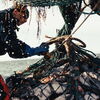Processing Your Payment
Please do not leave this page until complete. This can take a few moments.
- News
-
Editions
-
- Lists
-
Viewpoints
-
Our Events
-
Event Info
- Business Leaders of the Year Reception 2025
- Women's Leadership Forum 2025
- On the Road with Mainebiz in Bethel
- Health Care Forum 2025
- On The Road with Mainebiz in Greenville
- On The Road with Mainebiz in Waterville
- Small Business Forum 2025
- Outstanding Women in Business Reception 2025
- On The Road with Mainebiz in Bath
- 60 Ideas in 60 Minutes Portland 2025
- 40 Under 40 Awards Reception 2025
- On The Road with Mainebiz in Lewiston / Auburn
- 60 Ideas in 60 Minutes Bangor 2025
Award Honorees
- 2025 Business Leaders of the Year
- 2024 Women to Watch Honorees
- 2024 Business Leaders of the Year
- 2023 NextUp: 40 Under 40 Honorees
- 2023 Women to Watch Honorees
- 2023 Business Leaders of the Year
- 2022 NextUp: 40 Under 40 Honorees
- 2022 Women to Watch Honorees
- 2022 Business Leaders of the Year
-
-
Calendar
-
Biz Marketplace
- News
- Editions
- Lists
- Viewpoints
-
Our Events
Event Info
- View all Events
- Business Leaders of the Year Reception 2025
- Women's Leadership Forum 2025
- On the Road with Mainebiz in Bethel
- Health Care Forum 2025
- On The Road with Mainebiz in Greenville
- + More
- On The Road with Mainebiz in Waterville
- Small Business Forum 2025
- Outstanding Women in Business Reception 2025
- On The Road with Mainebiz in Bath
- 60 Ideas in 60 Minutes Portland 2025
- 40 Under 40 Awards Reception 2025
- On The Road with Mainebiz in Lewiston / Auburn
- 60 Ideas in 60 Minutes Bangor 2025
- - Less
Award Honorees
- 2025 Business Leaders of the Year
- 2024 Women to Watch Honorees
- 2024 Business Leaders of the Year
- 2023 NextUp: 40 Under 40 Honorees
- 2023 Women to Watch Honorees
- 2023 Business Leaders of the Year
- + More
- 2022 NextUp: 40 Under 40 Honorees
- 2022 Women to Watch Honorees
- 2022 Business Leaders of the Year
- Nomination Forms
- Calendar
- Biz Marketplace
Maine's wild blueberry industry taps Japan to expand sales
 COURTESY / UNIVERSITY OF MAINE
Exports of Maine’s wild blueberries to Japan have declined as a result of a tariff that favors competitors like Canada and the European Union.
COURTESY / UNIVERSITY OF MAINE
Exports of Maine’s wild blueberries to Japan have declined as a result of a tariff that favors competitors like Canada and the European Union.
More Information
Maine’s Congressional delegation is asking U.S. Trade Representative Katherine Tai to expand overseas sales of Maine wild blueberries by working with Japanese counterparts to eliminate tariffs on frozen blueberries.
The aim is to expand markets for Maine blueberries and reduce barriers facing farmers who export the fruit.
“Increasing exports to Asia is an important way to support U.S. agricultural industries and grow jobs in the United States, and blueberries are an important commodity, with exports worth over $245 million in 2021,” said a letter written by U.S. Sen. Angus King, I-Maine, with U.S. Reps. Rick Larsen, D-Wash., and David Valadao, R-Calif. The letter was co-signed by U.S. Sen. Susan Collins, R-Maine and U.S. Reps. Chellie Pingree and Jared Golden, 1st and 2nd District, respectively.
Tariffs are a form of import tax. In 2019, a U.S.-Japan Trade Agreement eliminated tariffs on fresh and dried blueberries, but frozen blueberries continue to face a 6% or 9.6% tariff rate, depending on sugar content.
Japan lifted tariffs on frozen blackberries, raspberries and strawberries, leaving frozen blueberries as an outlier in terms of market access.
Year-over-year decline
The U.S. share of the Japanese frozen blueberry import market has declined year-over-year, from 21% in 2018 to 15% in 2022, since the implementation of the U.S.-Japan Trade Agreement, mandated in 2020.
Japan’s tariffs on frozen blueberries have made American exports non-competitive, the lawmakers wrote.
“As a result, American frozen blueberry exports to Japan have been declining relative to those from top competitors like Canada and the European Union, who enjoy tariff-free trade with Japan for all forms of blueberries,” they wrote.
They requested a technical amendment to the U.S.-Japan Trade Agreement to ensure U.S. frozen blueberries receive the same duty-free market access in Japan as fresh or dried blueberries, as well as other frozen berries.
“Doing so will allow U.S. farmers to compete on level terms with other blueberry exporting countries and would help save and revitalize market opportunities for U.S. berry farmers,” they said.
Maine wild blueberry crop is tops
Maine produces nearly 100% of U.S.-produced wild blueberries, said Eric Venturini, executive director of the Maine Wild Blueberry Commission.
Most fresh blueberries in supermarkets are cultivated, so-called high-bush blueberries, but Maine's industry focuses on wild blueberry production — a smaller berry than the larger, cultivated berries and better suited to freezing.
Of Maine's harvest, 98% of berries are freshly frozen, said Venturini.
Of the total utilized production, 780,000 pounds were for the fresh market and 76.8 million pounds were processed.
Venturini called the tariff an “unnecessary barrier to U.S. exports of frozen blueberries.”
According to the latest data from the U.S. Department of Agriculture’s National Agricultural Statistics Service, Maine’s wild blueberry production for 2022 totaled 77.5 million pounds, down 26% from 2021.
The area harvested was estimated at 19,700 acres, down 6% from the previous year.
The average yield was 3,940 pounds per acre, down 1,060 pounds from the previous year. The value of the crop totaled $55.5 million, down from the previous season, with an average annual price of 71.6 cents per pound
By contrast, the 2021 harvest nearly doubled 2020’s volume, as ample rain revived production after frost and dry weather ruined crops the previous year.













0 Comments